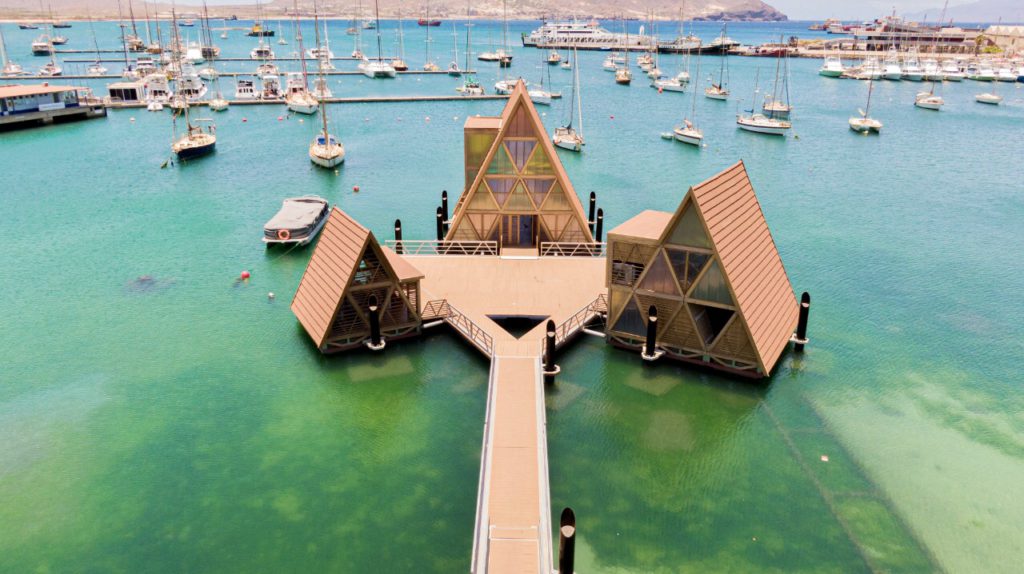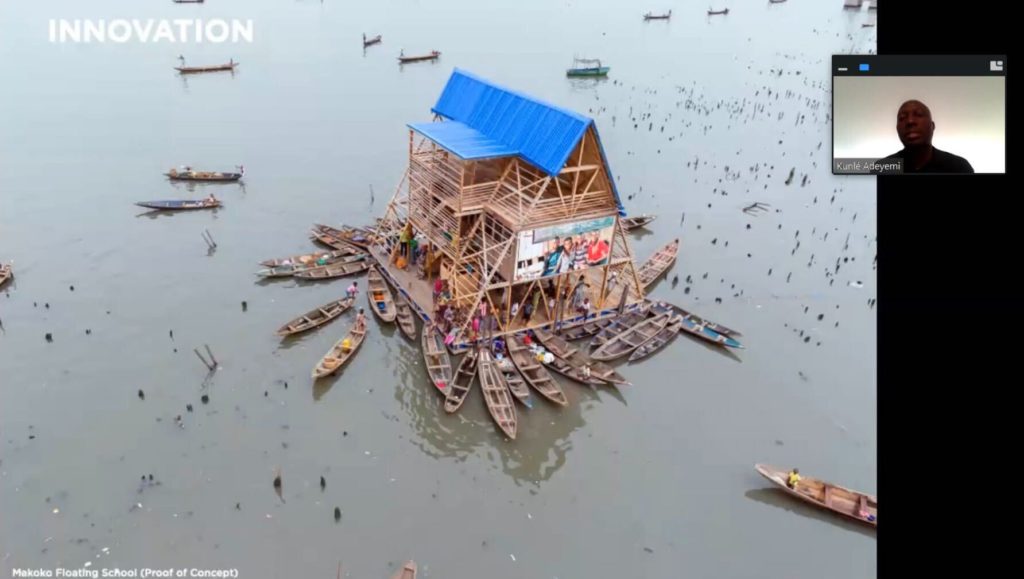Building on Water for a Climate-Aware Future
The vast majority of the world’s largest cities are located next to water and face challenges such as sea level rise, land subsidence and frequent flooding due to a change in weather patterns. Meanwhile, the most significant population growths occur on the developing regions of the African and Asian continents, which result in a sprawl of housing that is haphazardly built, vulnerable against natural disasters and prone to displacement. One such example, presented on the final day of the Archifest 2021 Conference by Kunlé Adeyemi, Founder and Principal of NLÉ, is the Makoko waterfront settlement of Lagos City, Nigeria.
Geographically, the city of Lagos has a large body of water at its heart, surrounded by medium- to high-rise developments that are bordered by floating settlements. However, the pressures of urbanisation have increased the demand for land reclamation. This is often an environmental hazard that could reduce waterways and increase the risk of flooding. It also has the risk of displacing communities, since land reclamation requires a high capital investment and is thus only viable for high-income city developments.
Adeyemi asked: “Why fight water, when we can learn to live with it?” Since there is a rising population of people living by waterfronts, he called for the government and private parties to consider water as an asset, and work alongside communities to arrive at contextual solutions that can improve the ‘blue economy’ of marine areas. Thus, NLÉ’s vision for Water Cities are sustainable and inclusive ecosystems built on and around water while anticipating rapid urbanisation and climate change adaptations. This does not only include floating structures, but the entire ecosystem from the floating and stilted structures at the brim, up to adjacent mid- and high-rise buildings.
By closely working with the community in Makoko, NLÉ identified the challenges as being bad quality housing and vulnerability to flooding, due to the majority of structures being stilts. Using the local building technology such as timber and bamboo structures, they demonstrated a ‘proof of concept’ in 2012 through Makoko Floating School, a three-storey structure that is aimed to densify water developments by creating larger structures that could rise with the tides.
Ever since then, there have been several prototypes of these systems built in Cape Verde, China, Italy and Belgium. The floating structures are prefabricated and then built by hand by taking advantage of locally available materials, such as on timber platforms atop reused plastic drums. Their infrastructure provision could be both on-grid, with pipes to supply drinking water and waste water; or off-grid, with a water collection and recycling system, waste composting, and energy generation through solar panels and batteries.
NLÉ has recently worked as a mediator for the Makoko community to the Government of Lagos and suggested several mandates to improve the life and culture of the water communities, including standardising building systems as well as ensuring the provision of public amenities, potable water, renewable energy and security. Furthermore, on a policy level, several water planning proposals for the government included the consolidation of ownerships into water plots and clusters with titles; implementing new regulations about the zoning and usage of water; increasing density by up to threefold; creating special economic zones; and incentivising the private sector for harmonious development. These efforts are intended to be a sustainable and innovative model for waterfront cities, improving their relation to ecology and community.



